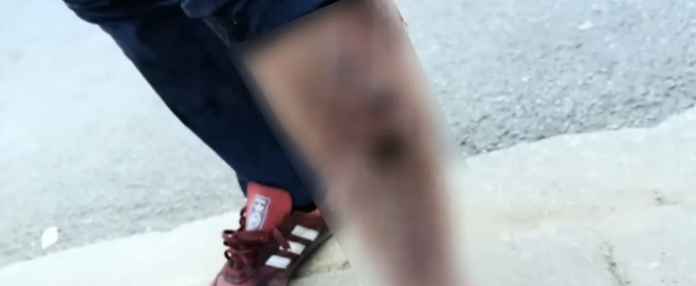Xylazine, a veterinary tranquilizer, is reportedly being used by drug addicts to experiment with a particularly destructive drug.
The effects of xylazine on humans are devastating. Users who don’t die immediately from an overdose often see their skin rot and turn black or slough away. Injection wounds can also become infected, compromising entire limbs.
The drug is becoming increasingly popular in large American cities like San Francisco, New York and Philadelphia.
Los Angeles is another city that has been hard hit by the spread of the drug. The LA County Sheriff’s Department began testing drugs confiscated for traces xylazine.
Zombie-maker
Zombie drug is not a controlled drug nor a brand new drug. It can be purchased online for between $6 and $20 per kilogram from Chinese suppliers. The drug has long been marketed and used for sedation as a veterinary medicine.
A 2014 study in Forensic Sciences International stated that “in humans, it can cause central nervous system depressant, respiratory depressions, bradycardias, hypotensions, and even deaths.” Intoxication with xylazine has been reported in 43 cases, of which 21 (49%) are non-fatal and 22 (51%) result in death.
TheBlaze reported previously on a warning issued by the U.S. Food and Drug Administration. It stated that “Repeated injection of xylazine has been associated to severe, necrotic ulcerations which are distinct from other soft tissue infections (e.g. cellulitis, pustules) commonly associated with injection drug usage. These ulcerations can develop away from the injection site.
The drug is often used as an adulterant to make recreational drugs. It can be used to mimic or enhance the effects of illicit drugs such as heroin and cocaine.
When combined with other drugs, the xylazine is particularly dangerous.
A 2021 American study found the drug in 42 Connecticut fatalities from March to August 2019
“Self-destruction in its finest”
KTLA reported on the horrific disfigurement of some xylazine users. Some were found with sores that required amputation. Other people have seen their skin peel off, exposing the inner workings.
Tracey McCann told the New York Times in early this year that she was a fentanyl user and her needle bruises were becoming crusty. McCann said, “I would wake up crying in the morning because my arms were dead.”
Brooke Peder (38), a city user, lost her left leg after a zombie drug injury became infected. The infection ate through the bone. She bared her arm to the Times and revealed “patches blackened tissue, exposed tendons and pus. The sheared skin was hot and crimson.”
Peder said, “The tranq-dope literally eats you flesh.” “It is self-destruction done to perfection.”
“We had a lady come in, and her sister was dead from a fentanyl-related overdose,” Cary Quashen, an addiction expert at KTLA said. “But it was not just a fentanyl-overdose, (but) the skin on her leg and arm was beginning to rot.” That’s a clear sign of xylazine.
DEA Special Agent Bill Bodner said to KTLA that “it’s really gruesomely deforming people.” It is more likely to prevent someone from breathing, and the other things that go along with xylazine. When you inject it, the blood flow is actually reduced.
In October, the DEA published an intelligence report detailing exhibits involving this drug within the laboratory system of the agency between 2020 and 2021. The report showed a 61% rise in the Northeast U.S. Census region, 193% in the South and a 7% in the Midwest. It also noted an 112% increase for the West.
In the U.S. Census regions mentioned above, xylazine positive overdoses have increased in the Northeast by 103%, the South by 1,127%, the Midwest by 516%, and the West has seen an increase of 750%.
Looking closer
The New York Post reported that the LA County Sheriff’s Office is tracking the prevalence of xylazine in Los Angeles, which is one the hardest-hit American cities.
Previously, this was not a priority as the drug wasn’t illegal.
As of April 1, the LACSO pilot program requires that crime lab analysts test confiscated drugs for the presence of tranquilizers.
Nicole Nishida, DEA Los Angeles Field Division spokesperson, told the Los Angeles Times that xylazine is being used as an additive in fake fentanyl tablets. While the number of xylazine pills is relatively low in comparison to other parts of the United States the trend has become more alarming.
The Times reported that federal data showed that approximately 23% of the fentanyl tablets and powder seized in 2020 contained tranquilizer.
They will determine if they find that by the end of the month, there is a high number of positive xylazine tests. If so, they’ll set standards for additional confirmatory testing.
“This will be very unique because I am asking them to track an uncontrolled substance,” Capt. Ernest Bille, the director of the Department’s Scientific Services Bureau told the Los Angeles Times that he was a unique request.




